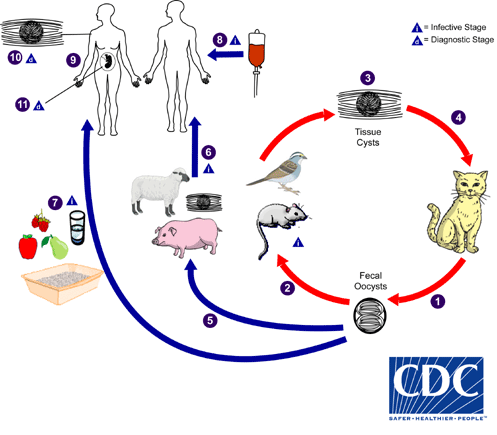Table of Contents
Credits
Host: Sara Dong
Guest: Julie Steinbrink
Producing/Editing: Sara Dong
Our Guests
Julie Steinbrink, MD

Julie Steinbrink is an Assistant Professor in Infectious Diseases at Duke University, specializing in Adult Transplant ID. Her clinical care focuses on the management of infections in immunocompromised patients, including solid organ and bone marrow transplant recipients, as well as patients with hematologic malignancies. Her research focuses on developing noninvasive diagnostics and severity prognostic tools for infectious diseases in immunocompromised patients. Additionally, she serves as co-Chair of the AST Infectious Diseases Community of Practice Education Workgroup
Consult Notes
Resources for Transplant ID mentioned in this episode
- American Society of Transplantation Infectious Diseases Community of Practice (AST ID COP) guidelines!
- Sara recommended these as a great resource to review topics yourself and to pass along to learners on your team as well
- We always link to these for the relevant Transplant ID Febrile episodes as well!
- Here is the one including toxoplasmosis: La Hoz RM, Morris MI; Infectious Diseases Community of Practice of the American Society of Transplantation. Tissue and blood protozoa including toxoplasmosis, Chagas disease, leishmaniasis, Babesia, Acanthamoeba, Balamuthia, and Naegleria in solid organ transplant recipients- Guidelines from the American Society of Transplantation Infectious Diseases Community of Practice. Clin Transplant. 2019;33(9):e13546. doi:10.1111/ctr.13546
- Here is a general link to all of the guideline publications: https://www.myast.org/education/publications/infectious-diseases-guidelines-4th-edition#
- You can follow them on twitter @AST_IDCOP
- Check out transplantid.net (website) or @TransplantIDNet on Twitter for a TxID library curated by AST ID COP and Yoram Puius
We started with a quick reminder about Toxoplasma gondii:
- Protozoal infection
- Human transmission can occur via:
- Foodborne: ingestion of oocysts from environment (such as soil or fresh water sources contaminated with feline feces), contaminated fruits/veggies or ingestion of tissue cysts in meat from infected animal
- Vertical transmission: infected mother to fetus
- Blood transfusion or via organ transplantation from infected donor
Link to the CDC DPDx page on toxoplasmosis

A little about screening for toxoplasmosis before transplant and what we are worried about
- Screening of all donors and recipients recommended
- Toxoplasmosis in transplant recipients can be a manifestation of donor derived infection, reactivation of latent infection, or could also be a primary acute infection
- Seronegative recipients of Toxo IgG+ donors have highest risk of infection (D+/R-)
- Most frequent transmission is in D+/R- heart recipients, who have up to 75% risk of early post-transplant toxo without prophylaxis
- Read more below:
- Dhakal R, Gajurel K, Montoya JG. Toxoplasmosis in the non-orthotopic heart transplant recipient population, how common is it? Any indication for prophylaxis?. Curr Opin Organ Transplant. 2018;23(4):407-416. doi:10.1097/MOT.0000000000000550
- Fernàndez-Sabé N, Cervera C, Fariñas MC, et al. Risk factors, clinical features, and outcomes of toxoplasmosis in solid-organ transplant recipients: a matched case-control study. Clin Infect Dis. 2012;54(3):355-361. doi:10.1093/cid/cir806
What approaches can we take to try to prevent infection?
- Prophylaxis
- Toxo D+R- recipients should receive targeted ppx early post-transplant when max immunosuppression / majority of transmissions occur
- The highest levels of immunosuppression and potential transmission are in the first three months or so after transplant, but as Julie pointed out, don’t forget about the times when patients require augmented/increased immunosuppression such as with rejection treatment
- Standard TMP/SMX PCP ppx regimens (TMP 160/SMX 800 3x/wk or TMP80/SMX 400 QD) are likely effective
- There is less data for alternative regimens for toxoplasma prevention, such as dapsone or atovaquone, and thereis some concern for breakthrough infections or failures with these medications
- Pentamidine would not be effective against Toxoplasma
- Some centers recommend D+R- heart recipients be treated with 6 wks of pyrimethamine in addition to standard TMP/SMX ppx >> but some report no issues with TMP/SMX alone
- Duration of prophylaxis is a bit debated and transplant-center-dependent, especially based on how endemic the infection is in your area or what particular organ groups you are working with. Often times, patients will be treated for 3-6 mo vs 1 year, but sometimes they get lifetime prophylaxis if they are high risk
- Toxo D+R- recipients should receive targeted ppx early post-transplant when max immunosuppression / majority of transmissions occur
- Counseling
- Avoid eating raw or poorly cooked meat (avoiding cooking surface/utensils, food before cleaned thoroughly)
- Avoid untreated drinking water
- Avoid changing cat litter boxes or wear gloves and wash hands
- Litter boxes should be changed daily as it takes at least 24 hrs for parasite to become infectious after shed in cat feces
- Gloves for soil/sand/gardening
What might be some clues or clinical presentations that should make us think about toxoplasmosis in a transplant recipient?
- Toxoplasma in immunocompromised patients can cause a variety of clinical presentations and it depends on where the infection manifests. You may have pneumonitis, encephalitis, chorioretinitis, and so on
- Julie mentioned a few key syndromes:
- Pulmonary infection that may present with typical respiratory symptoms (fever, dyspnea, cough) and imaging with bilateral and diffuse infiltrates
- CNS infection that may present with unexplained headache, encephalitis, seizures, or focal neurologic deficits. You’ll hear the buzzwords about “multiple ring enhancing lesions” on brain imaging, often localized to basal ganglia area
- Toxo also has a predilection for muscle, such as causing myocarditis and heart failure (which may be difficult to distinguish from rejection)
- Chorioretinitis may present with vision changes, photophobia, retinal lesions
- Adekunle, et al. Clinical characteristics and outcomes of toxoplasmosis among transplant recipients at two US academic medical centers. Transpl Infect Dis. 2021 Aug;23(4):e13636. doi: 10.1111/tid.13636.
So we’re worried about acute toxo in SOTR? What diagnostic test do we request?
- PCR of blood and body fluids
- Biopsy for involved tissue to ID tachyzoites
- Remember that IgM is not the best choice in this situation
Infographics
Disclosures
Our guest (Julie Steinbrink) as well as Febrile podcast and hosts report no relevant financial disclosures
Citation
Steinbrink, J., Dong, S. “#40: Febrile Digest – Toxo + Transplant”. Febrile: A Cultured Podcast. https://player.captivate.fm/episode/64012852-e60b-4483-91a6-a1ab1fe00b00


